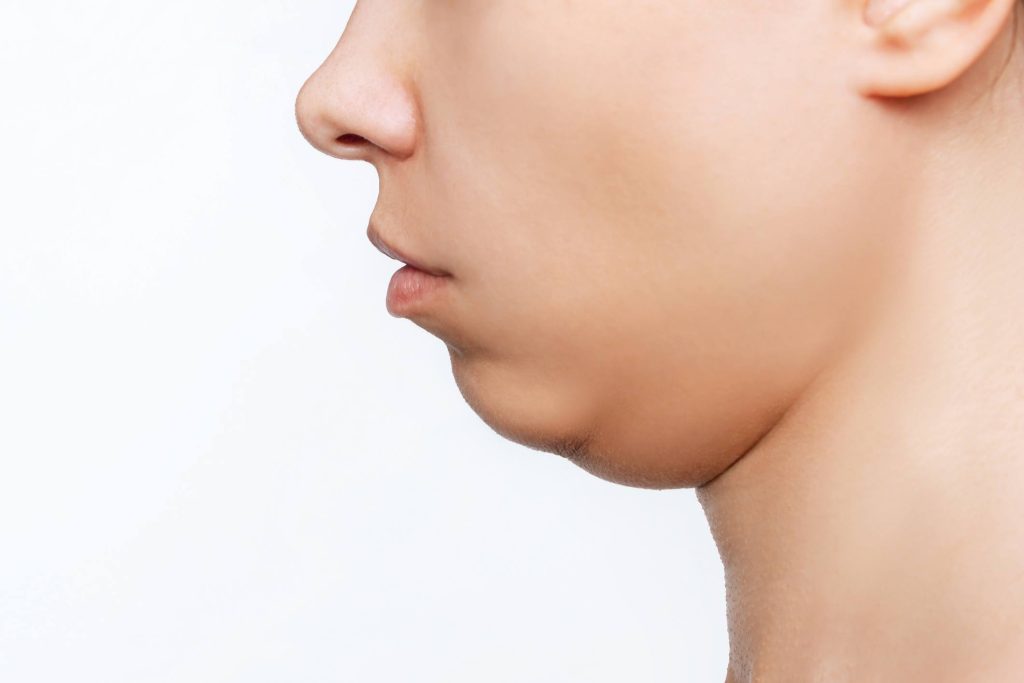Key Takeaways
-
Nerve damage is a potential risk associated with liposuction, depending on technique, surgeon skill, and patient anatomy.
-
Mechanical trauma from the cannula and thermal injury from surgical tools are the primary sources of nerve issues with this procedure.
-
Local anesthetics can mask nerve sensitivity, leading to a delay in the recognition of nerve damage post surgery.
-
Patients need to be vigilant for symptoms such as numbness, tingling, or abnormal sensations and report these immediately to their doctor.
-
Selecting an experienced surgeon, learning about new methods, and adhering to pre and post-op care guidelines may minimize nerve risks.
-
Psychological care is essential, since nerve impairment could impact emotional wellness and self-perception throughout the healing process.
Liposuction can cause nerve damage in some cases, usually as a rare but known risk of the procedure. In liposuction, small incisions and cannulas can contact or injure adjacent nerves, causing numbness, tingling, or pain. Most have mild, short-term symptoms but some can have longer-lasting effects. Things such as which area was treated, how much fat was removed, and the surgeon’s technique can influence the risk of nerve damage. Most of them inquire about safety and side effects before having liposuction. To give you insight on what to anticipate, this guide examines how nerve damage can occur, symptoms to be aware of, and steps to minimize your risk during recovery.
The Nerve Connection
Liposuction takes fat off, under the skin, and it can numb or damage some of the nerves in the region. Nerve injuries from liposuction are rare, but they can cause numbness, tingling or pain. These symptoms tend to be temporary, with sensitivity resolving within 3-6 months for the majority of individuals. Certain nerve wounds can require more time to recover or require additional attention. Here’s a table detailing the major variables that effect nerve damage risk in liposuction.
|
Factor |
Effect on Nerve Damage |
Example/Note |
|---|---|---|
|
Mechanical Trauma |
Direct nerve contact or damage |
Cannula hitting nearby nerves |
|
Thermal Injury |
Heat causing nerve harm |
Prolonged use of heated tools |
|
Anesthetic Effects |
Masks nerve sensation changes |
Hard to notice nerve injury during procedure |
|
Anatomical Zones |
Some areas more at risk |
Sciatic nerve in the buttock/thigh region |
|
Surgical Technique |
Different methods change risk |
Tumescent technique reduces trauma |
1. Mechanical Trauma
The cannula, which is the thin tube that sucks out the fat, can occasionally graze or lay on nerves. When this occurs, it can result in neuropraxia — a relatively benign injury that is transient and normally resolves within weeks or months. If the surgeon applies too much force, or moves the cannula roughly, the chance of harming deeper or larger nerves increases, and it may take longer to heal.
Small incisions tend to reduce the risk of infection. A good surgeon who knows liposuction isn’t as likely to damage nerves. Selecting appropriate puncture sites and using caution with the cannula both contribute to preserving nerve activity.
2. Thermal Injury
Heat from surgical instruments, particularly in liposuction methods such as laser-assisted lipo, can occasionally damage nerves near the surface. Extended heat exposure can even lead to axonotmesis, a deeper nerve injury that more slowly heals.
Contemporary liposuction attempts to minimize thermal injury by using lower heat, less tool contact time and improved cooling techniques. Gentle blowing and not holding the hot iron in one place guard nerve integrity.
3. Anesthetic Effects
Local anesthetics numb the area — so similar alterations in nerve sensitivity frequently go undetected until post surgery. This can postpone discovering whether a nerve got damaged.
Anesthesia can occasionally make it harder for patients to feel pain or tingling, so nerve injuries can be missed early on. Different types and dosage of anesthesia can impact the rate of nerve recovery following the operation.
4. Anatomical Zones
Certain body zones, such as the buttocks or thighs, have larger nerves near the surface. The sciatic nerve is the famous nerve endangered in these locations.
Understanding a patient’s individual anatomy allows the surgeon to plot safer courses for the cannula. Careful mapping of nerve pathways reduces the risk of nerve complications.
Nerve injuries in these high-risk zones require additional care.
Good knowledge of anatomy lowers complications.
5. Surgical Technique
The manner in which liposuction is performed is crucial. Tumescent liposuction, which infuses a unique fluid that causes the area to swell and firm, helps to buffer nerves. Surgeons using less invasive techniques experience fewer nerve injuries.
Talent and practice count. Patients operated on by veteran surgeons tend to regain the function of their nerves within six months. Early ambulation after surgery aids in promoting nerve recovery and reduces complications such as seroma.
Recognizing Symptoms
Identifying symptoms of nerve damage after liposuction is important for timely treatment. Numbness or tingling in the treated area is typical in the initial weeks. Nearly all patients — as high as 90% — experience some form of nerve tingling, much like a pins-and-needles sensation, post-surgery. Most of these symptoms dissipate within a few weeks to a few months, but it’s important to monitor how long they endure and how intense they feel.
Common signs and symptoms to watch for include:
-
Persistent numbness in one area or along the skin
-
Tingling, burning, or “electric” feelings that do not fade
-
Loss of feeling or sharp drop in skin sensitivity
-
Ongoing pain, even at rest
-
Weakness in nearby muscles
-
Unusual sensitivity to touch or temperature
-
Trouble with movement in the area
-
Changes in smell (rare, but some people smell is off post-surgery)
Mild numbness and tingling are expected during recovery. These emotions tend to be at their worst during the initial days and then subside. Some mild nerve pain or changed touch can occur as nerves recover and most experience significant progress by four to six weeks. It’s common for the skin to be weird, slightly numb or even “thick”, but these tend to diminish over time.
Or perhaps, more importantly, when symptoms are not normal. If numbness/tingling/pain remain unchanged or worsen after three months, this could indicate the nerves aren’t healing properly. Red flags are persistent, burning pain, weakness, or failure to regain sensation after months. Any symptoms which persist for more than six months, or prevent you from accomplishing daily tasks, warrant evaluation by a nerve specialist.

Notice and record any symptoms that appear abnormal, their frequency, and what alleviates or exacerbates them. This assists your doctor in identifying trends, monitoring improvement, and recommending appropriate therapy. Rarely, changes in smell occur, but these too fade within months.
Inherent Risks
Liposuction is a surgery with actual dangers. Nerve damage is one of the risks, but not the only. Every risk is based on surgeon’s skill and technique and a person’s own body. Knowing all the potential outcomes helps to establish clear expectations for anyone considering liposuction.
-
Numbness or nerve damage can occur when nerves in the vicinity of the treatment are injured during the procedure. Most commonly, this manifests as numbness or tingling in the skin. Often, the symptoms subside within weeks, but at times, they can be prolonged or never quite resolve. The risk is higher if the surgery is complicated or extensive. Surgeons have to understand the nerve mapping to reduce this risk; however, even with caution, it cannot be eliminated.
-
Visceral perforation is yet another risk, and it is grave. In other words, internal organs, such as the bowel, are perforated during the operation. Although infrequent, this has been reported in 11 cases and represents 15% of deaths following liposuction. Bowel perforation is particularly dangerous and can be fatal if not identified and treated immediately.
-
Swelling after surgery is common and can be made worse by health issues like low blood levels (anaemia), not enough proteins in the blood, and problems with the kidneys. For instance, a person with haemoglobin less than 8 g% may require a blood transfusion prior to surgery to reduce the risk of complications.
-
Several individuals experience seroma, or fluid accumulating under the skin following surgery. This occurs in as many as 3.5% of cases. Moving early after surgery can prevent this risk.
-
Smoking compounds the risk of issues. Smokers are instructed to quit no less than three weeks prior to surgery. This reduces the risk of slow healing and other complications.
-
Everyone’s anatomy can factor in risk. Certain bodies have nerves closer to the surface or in atypical locations, increasing the chances of nerve injury, even in adept hands.
Prevention Strategies
Nerve damage is a risk in liposuction too, but there are lots of ways to reduce this risk and help your body heal if it does. The initial step is to select a qualified and seasoned surgeon. Board-certified surgeons with a good liposuction track record are unlikely to cause nerve injury. A quality surgeon will understand how to operate around nerves, employ appropriate instruments and detect early symptoms of complication.
Newer liposuction methods prioritize nerve preservation. Methods that help protect nerves include:
-
Power-assisted liposuction (PAL) for more control and less trauma
-
Ultrasound-assisted liposuction (UAL) to break up fat with less physical force.
-
Harvesting fat from the thigh with smaller cannulas, typically under 15 cm
-
Water-assisted liposuction (WAL) to softly dislodge fat from tissue
-
Tumescent that makes the area swell and provides surgeons with a more distinct view of nerves
Patients should ALWAYS adhere to their surgeon’s pre-operative guidelines. This frequently involves discontinuing certain medications, avoiding tobacco, maintaining adequate hydration and a nutritious diet. These measures decrease the risk of hemorrhaging, which can minimize nerve damage. Patients need to inquire what their surgeon is going to do about nerve risks during the surgery. For example, meticulous dissection adjacent to the anterior superior iliac spine and preserving the scarpa fascia in the vicinity of the inguinal ligament can prevent lateral femoral cutaneous nerve damage. In cosmetic breast surgery, the surgeon should endeavor to preserve the at-risk intercostal cutaneous nerves.
Postoperatively, early mobilization is crucial. Getting up and moving quickly post-procedure accelerates nerve recovery and reduces the risk of complications such as seroma. Physical therapy is extremely beneficial at this phase. Therapists can instruct patients on how to maintain good posture and modify activities at work or home to relieve strain on regenerating nerves. They direct soft motions that assist nerves regrow. Easy home care — such as pumping on tender points multiple times each day — can help relieve nerve pain! It is a slow recovery, and patients should not despair. It takes months, sometimes more, to see results — but patience is rewarded.
Recovery and Management
Recovery after liposuction, when nerve pain or numbness shows up, can be slow. Nerves mend in their own time. As with any pain, you can heal faster with rest, but as with any deep trauma, complete recovery may take a long time. Patience is required as true advances can be incremental and certain shifts, such as numbness or tingling, may wax and wane. Take for instance, a few experience a decline in their sense of touch or smell initially, but the majority restore to normal within six weeks to six months. If the facial nerves are affected, they might recover in three to six months due to the intermixing and interlinking of nerve fibers.
A checklist for good recovery and pain management gives structure and focus during this period:
-
Follow your doctor’s plan: Always stick to the aftercare guide your doctor gives, like taking medicine, going to check-ups, and wearing compression garments. These measures assist reduce swelling and decrease the risk of permanent nerve injuries.
-
Watch your symptoms: Keep track if numbness, tingling, or pain gets worse or lasts past three months. Early nerve pain and strange sensations are typical, if they persist that could indicate a longer term issue.
-
Protect the area: Avoid heavy lifting or hard workouts for the first few weeks so your body can heal without added stress.
-
Move gently: Slow, easy movement helps blood flow and keeps tissues from getting stiff. Don’t push through sharp pain.
-
Control swelling: Elevate the area if you can, and use cold packs for short times to keep swelling down, which can help nerves heal.
-
Stay in touch with your care team: If pain stays strong, or you have odd changes in touch or strength, talk to your doctor. Certain nerve injuries require additional assistance, such as nerve pain medication or, in extreme cases, surgery. About 1% of folk can have permanent nerve trouble following this kind of surgery.
Following these steps increases your chances for an uneventful recovery. Most return to their lives with nominal nerve concerns, but awareness and action aids in nipping problems in the bud.
The Mental Impact
Nerve damage post-liposuction is psychological as well as physical. It tends to cause emotional trauma that extends well beyond the time of swelling or pain. When individuals experience numbness or strange sensations in their skin, it can be difficult to feel attractive. This is the case with most body parts, but research reveals the lateral zones suffer more nerve damage—up to 79%. When the change is on the face, such as altered forehead sensation, it can be even more disruptive. One study discovered that 74% of people experienced this post surgery. These shifts can make everyday life seem strange and cause anxiety or guilt around style.
Self-esteem can suffer post-liposuction when final results appear bumpy or scars develop. Even though only 1.3% of people become hypertrophic or keloidal scarred, these marks can be hard to conceal and affect confidence. Swelling is another component of recovery that can impact people’s body image. Though swelling tends to have a peak and resolution by three weeks, for some, it lingers longer, clouding the final result and contributing to continued distress.
For those with sensibility disorders — such as numbness or tingling in the thigh — mental issues can ensue. These emotions could feel awkward in clothing or in participating in regular activities. Nerve pain is another. Learning to handle this ache is crucial, not merely for ease, but to assist in escaping chronic anxiety or even depression. If you’ve got nagging nerve pain, it’s difficult to concentrate on the rest of your life.
Support systems count. Discussing with friends, family, or a counselor can assist individuals in managing. A lot of people find it helpful to connect with support groups, online or in-person, and swap stories and tips. Counseling provides a healthy outlet to discuss anxieties and discover coping mechanisms. It’s crucial for health teams to monitor patients’ mental health, and not just their physical recovery.
Conclusion
Can liposuction cause nerve damage, most instances remain mild and diminish over time. Some people can experience numb spots, tingles or pain post-surgery. These symptoms frequently resolve within a few weeks or months. Speaking with an experienced surgeon, inquiring and understanding the risks can help reduce anxiety. Good post-operative care, such as light massage and rest, can expedite recovery. Friend or trained counselor support can aid stress or mood swings. Liposuction candidates, consider the risks and consult with a truly skilled physician. Be aware and express your worries. Contact for consultation if you notice odd or persistent symptoms.
Frequently Asked Questions
Can liposuction cause nerve damage?
Sure, liposuction can cause nerve damage. This is an uncommon side effect, but liposuction can cause numbness, tingling or loss of sensation. Most cases resolve, but some are persistent.
What nerve symptoms might appear after liposuction?
Common symptoms include numbness, tingling or a burning sensation around the treatment site. Others can experience numbness or weakness. These typically get better as your body recovers.
How likely is permanent nerve damage from liposuction?
Permanent nerve damage is rare. These types of nerve problems are usually short-lived, subsiding within weeks or a few months. Selecting a seasoned surgeon minimizes the risk.
Are certain people more at risk for nerve damage after liposuction?
Individuals with pre-existing conditions, like diabetes or prior nerve issues, might be more vulnerable. Go over your medical history with your doctor prior to the procedure.
How can nerve damage from liposuction be prevented?
Prevention begins with selecting an experienced, board-certified surgeon. Adhering to all pre- and post-surgery instructions mitigates risks. Good communication with your doctor is key.
What should I do if I notice nerve symptoms after liposuction?
See your surgeon if you have numbness, tingling, or pain that does not get better. Getting medical advice early on can help keep symptoms under control and support better recovery.
Does nerve damage from liposuction affect mental health?
Yes, chronic nerve issues can affect mental health. Worry about recovery is natural. Reach out to your care provider if you’re worried.

















